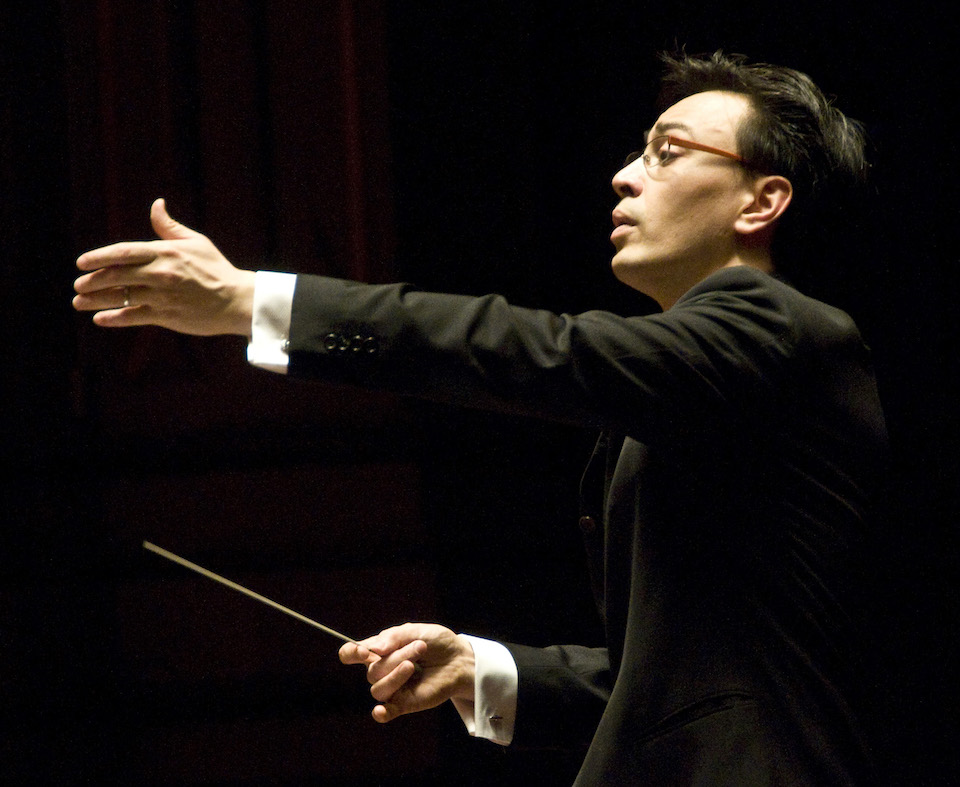Four world-class soloists, one hundred and seventy-five tightly knit choristers, and a remarkable young German conductor wowed a sold-out audience at Zellerbach Hall last Thursday, April 19.
For their season finale the Berkeley Symphony performed one of the pillars of Western music, Beethoven’s Symphony No. 9, written three years before his death. That larger-than-life work was a game-changer, ushering in the Romantic era and inspiring Wagner and Mahler to their own out-sized works, and even changing the scale of what symphonies would strive to do.
Beethoven worked his magic with equal doses of subtlety and bombast, long inventive variations and explosions of horns and timpani. And then in the fourth movement he enlarged the symphonic form by joining his orchestral forces with a substantial chorus for the “Ode to Joy.” UC Berkeley Chorus and the UC Berkeley Alumni and Chamber Choruses were enlarged with members of the Berkeley Community Chorus for a mob that was surprisingly tight for their size and for the rapidity of the German text. They filled the entire back half of the stage, crowding the instruments to the front.

Ken-David Mazur was the guest conductor, and one could immediately feel the joy and gravity that he felt in the music.
“I have sung this since I was nine years old. I grew up in Leipzig, the City of Schiller who wrote the Ode to Joy, and I have visited Schiller’s house and seen the small room where he wrote… and we sing this every Christmas and New Year’s, so everyone knows it.”
He did indeed know it, and kept up a grueling pace.
They opened with a soft murmur of strings which slowly swelled into the powerful first theme with its sudden outbursts of color. It was spring and passion and power, all tied together in a glorious knot.
The orchestra was not quite on their game, with too many guest conductors this season, each wanting a different sound. But Mazur was as good as it gets.
He conducted the slow bittersweet third movement with enough lilt to move us through the tragic without freezing into denial, and flute and clarinets guided us back to beauty.
But then came the blockbuster final movement, beginning with stern cellos and basses and then climbing a mountain of drama into a final region of clarion joy. Bass Adam Lau stood and sang “O Freunde” (O Friends) in a voice like rolling thunder, and the audience knew it was time to party.
The chorus joined him, firm and agile, their clear voices providing heft and ground, palette and prayer.
And the other three soloists! Amitai Pati added tenor notes that were clean and sophisticated, Michelle Rice gave us loving warmth and a mezzo’s sweet burr, and soprano Laquita Mitchell gilded the sound with sharply penetrating top notes, the lemon zest on the rim of the glass.
The chorus launched into Schiller’s poetry, written in 1785 on the eve of the French Revolution, and then adopted by Beethoven 40 years later as his own prayer for peace. Freude they sang, as peremptory as an order to own our joy. And Alle Menschen werden Bruder, they reminded us, all men shall become brothers.
Afterwards I chatted with some of the musicians. “It was a party! A party!” beamed Carol Rice, the principal cellist.
“I feel like I just ran a marathon with a bunch of friends and we just crossed the finish line… and nobody fell or was injured,” said Matthew Szemela, the Associate Concertmaster.
“I liked the tempo,” said percussionist Ward Spangler. “Was it too fast for the strings? You’d have to ask them, but I liked it!”
“We had to spit out the consonants so that it would carry [over the orchestra],” said John Sheperd, a bass in the alumni chorus and the Curator of the UC Music Library. “Eine!” He shouted with a hard chopped “n” to demonstrate how to propel an “n” over the brass.
“The tempo? Well, I’ve heard the slow section taken too slowly and it drags,” said a retired violist. “But tonight’s did not.”
And there you have it. Beethoven’s light still shines brightly.
—Adam Broner
Photo above of Ken-David Masur, photo by Beth Ross Buckley.
